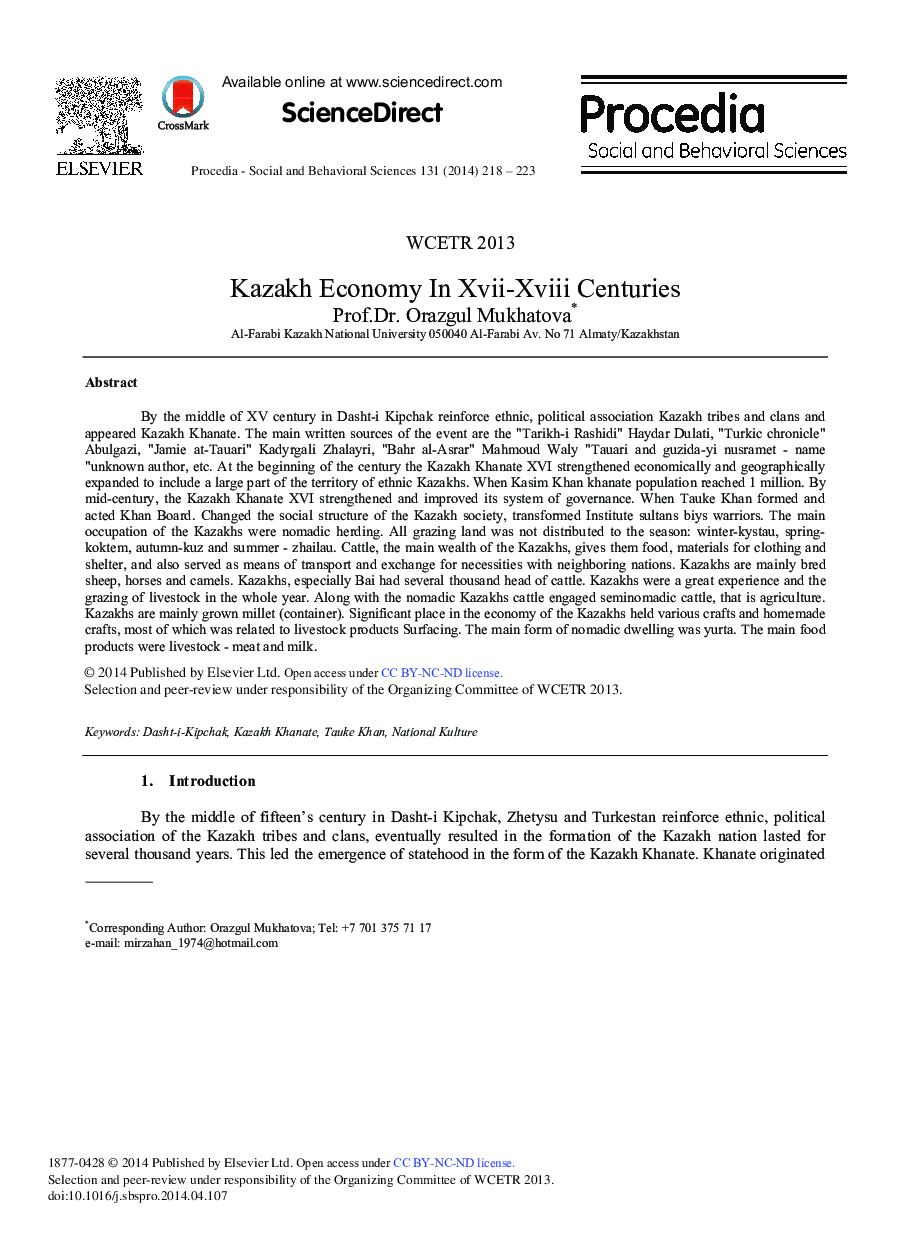| Article ID | Journal | Published Year | Pages | File Type |
|---|---|---|---|---|
| 1115072 | Procedia - Social and Behavioral Sciences | 2014 | 6 Pages |
By the middle of XV century in Dasht-i Kipchak reinforce ethnic, political association Kazakh tribes and clans and appeared Kazakh Khanate. The main written sources of the event are the “Tarikh-i Rashidi” Haydar Dulati, “Turkic chronicle” Abulgazi, “Jamie at-Tauari” Kadyrgali Zhalayri, “Bahr al-Asrar” Mahmoud Waly “Tauari and guzida-yi nusramet - name”unknown author, etc. At the beginning of the century the Kazakh Khanate XVI strengthened economically and geographically expanded to include a large part of the territory of ethnic Kazakhs. When Kasim Khan khanate population reached 1 million. By mid-century, the Kazakh Khanate XVI strengthened and improved its system of governance. When Tauke Khan formed and acted Khan Board. Changed the social structure of the Kazakh society, transformed Institute sultans biys warriors. The main occupation of the Kazakhs were nomadic herding. All grazing land was not distributed to the season: winter-kystau, spring- koktem, autumn-kuz and summer - zhailau. Cattle, the main wealth of the Kazakhs, gives them food, materials for clothing and shelter, and also served as means of transport and exchange for necessities with neighboring nations. Kazakhs are mainly bred sheep, horses and camels. Kazakhs, especially Bai had several thousand head of cattle. Kazakhs were a great experience and the grazing of livestock in the whole year. Along with the nomadic Kazakhs cattle engaged seminomadic cattle, that is agriculture. Kazakhs are mainly grown millet (container). Significant place in the economy of the Kazakhs held various crafts and homemade crafts, most of which was related to livestock products Surfacing. The main form of nomadic dwelling was yurta. The main food products were livestock - meat and milk.
